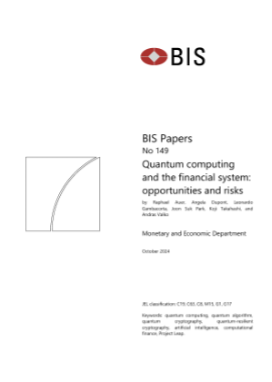
Open Banking in Canada: Compliance Risks & Cybersecurity Imperatives for a Secure Financial Future
Introduction: The Compliance & Cybersecurity Tightrope in Open Banking
Canada’s Open Banking framework is set to redefine financial services by 2026, creating a seamless, consumer-driven financial ecosystem. With Fintechs Canada advocating for all investment accounts and securities registrantsto be included, the industry is at a crossroads.
While this presents opportunities for fintech innovation and consumer empowerment, it also introduces heightened risks:
- Regulatory Uncertainty: Open Banking must comply with PIPEDA, provincial securities laws, and global data privacy standards. How will financial institutions navigate compliance when investment accounts fall under multiple regulatory frameworks?
- Cybersecurity Vulnerabilities: Open Banking exposes financial institutions to API threats, third-party risks, and large-scale data breaches. Are existing cybersecurity defenses sufficient to protect investment accounts from cybercriminals and fraud?
- Liability Complexities: Who is responsible if a third-party fintech suffers a breach, exposing sensitive consumer investment data? Without a clear liability framework, financial institutions could face litigation risks and consumer trust erosion.
This blog explores the compliance challenges, cybersecurity methodologies, and future security innovations that financial institutions must adopt to survive and thrive in the Open Banking era.
📖 Ref: Open Banking Expo (2025). Fintechs Canada recommends Open Banking be expanded to all investment accounts https://www.openbankingexpo.com/news/fintechs-canada-recommends-open-banking-be-expanded-to-all-investment-accounts/

Regulatory Compliance & Data Privacy: The Hidden Risks in Open Banking
Compliance Gaps in Open Banking’s Data Privacy Framework
Expanding Open Banking to investment accounts introduces regulatory ambiguity, as financial data privacy laws and securities regulations overlap. The key challenges include:
🔹 Cross-Jurisdictional Data Privacy Conflicts
Investment accounts fall under multiple regulatory bodies, leading to potential contradictions in data governance:
- PIPEDA (Federal Privacy Law): Requires explicit consent before financial institutions share consumer data, but lacks specific Open Banking API consent protocols.
- Provincial Securities Laws (Ontario Securities Act, Alberta Securities Act, etc.): Oversee investment account disclosures, but do not specify how Open Banking data-sharing should be regulated.
- Financial Consumer Protection Framework (FCAC): Enforces fair financial data use, but Open Banking creates new risks in third-party data handling that remain unaddressed.
❗ Compliance Risk: If Open Banking’s investment account integration contradicts securities laws or privacy mandates, financial institutions could face enforcement actions, lawsuits, and reputational damage.
🔹 Third-Party Liability & Data Breach Accountability
Under PIPEDA, financial institutions are responsible for third-party data breaches if they share consumer data via Open Banking APIs—even if the breach occurs at a fintech firm.
- Who is liable if an API-based investment data breach happens?
- What legal obligations do fintechs have to report security breaches?
❗ Compliance Risk: Without explicit liability frameworks, financial institutions may face legal disputes and consumer lawsuits over third-party data misuse.
🔹 Consent & Data Portability Challenges
Under PIPEDA and the Digital Charter Implementation Act (Bill C-27), consumers must have full control over their financial data. However, Open Banking complicates how institutions track and revoke consent.
- Can consumers revoke consent after investment data is shared?
- How will financial institutions manage consent across multiple fintech partners?
❗ Compliance Risk: Failure to establish clear consent mechanisms could lead to regulatory penalties and loss of consumer trust.

Cybersecurity in Open Banking: Enterprise-Grade Threat Detection & Defensive Strategies
Advanced Cybersecurity Methodologies for Financial Institutions
Securing Open Banking investment accounts requires enterprise-level cybersecurity methodologies designed to identify system vulnerabilities, mitigate attack vectors, and ensure regulatory compliance.
💡 Red Team vs. Blue Team Exercises: Simulating Real-World Cyber Attacks
🔹 Red Teaming (Offensive Security Testing)
- Ethical hackers simulate real-world cyberattacks to expose Open Banking API vulnerabilities.
- Techniques include:
- API fuzzing to identify input validation flaws.
- Credential stuffing attacks to probe multi-factor authentication weaknesses.
- Privilege escalation maneuvers to test access control gaps.
🔹 Blue Teaming (Defensive Security Operations)
- The Blue Team defends financial institutions by detecting and neutralizing attacks.
- Key strategies include:
- SIEM log analysis to detect unusual API access patterns.
- Deception technology (honeypots) to lure attackers into fake Open Banking environments.
- Threat intelligence integration to map attack patterns to known cybercriminal networks.
✅ Impact: Red Team vs. Blue Team exercises enhance an institution’s ability to detect Open Banking cyber threats, ensuring regulatory resilience and operational security.
💡 Attack Surface Management (ASM): Proactive Vulnerability Detection
🔹 Why ASM is Critical for Open Banking:
- Open Banking expands the attack surface by introducing multiple API endpoints and third-party integrations.
- ASM continuously monitors external-facing assets to detect entry points for cyber threats.
🔹 Key ASM Techniques:
- API Inventory & Risk Assessment: Identifies active Open Banking APIs and checks for misconfigurations.
- Continuous Penetration Testing: Simulates cyberattacks against Open Banking environments.
- Dark Web Monitoring: Detects leaked credentials and compromised API keys.
✅ Impact: ASM enables proactive cybersecurity risk management, ensuring institutions detect vulnerabilities before attackers do.
💡 AI-Driven Threat Hunting: The Future of Open Banking Security
🔹 What is AI-Driven Threat Hunting?
- AI actively searches for hidden malicious activity across Open Banking networks before an attack is launched.
🔹 How AI is Changing Open Banking Security:
- Behavioral AI detects unusual fintech app behavior, flagging insider threats or compromised accounts.
- Self-Learning Algorithms adapt to new cyber threats in real time.
- Automated Incident Response enables institutions to contain cyberattacks within seconds.
🔮 Prediction: By 2028, AI-driven cybersecurity frameworks will become mandatory for Open Banking compliance.

🎯 Conclusion: The Time to Act is Now
Open Banking is set to transform Canada’s financial sector, bringing both opportunities and challenges. With regulatory requirements evolving and cybersecurity risks increasing, financial institutions must act now to ensure compliance, data security, and operational resilience.
To stay ahead, firms must proactively address regulatory obligations, strengthen API security, and implement AI-driven compliance solutions to mitigate risks.
At Studio AM, we help financial institutions navigate regulatory complexities, enhance cybersecurity resilience, and implement forward-thinking compliance strategies tailored to Open Banking.
📌 Is your institution ready for Open Banking’s compliance and cybersecurity challenges?
📌 Need expert guidance on regulatory updates, API security, or risk management?
🚀 Contact Studio AM today to ensure your firm stays ahead in Canada’s evolving Open Banking landscape.



